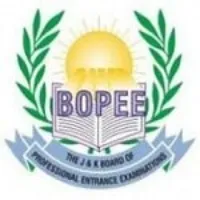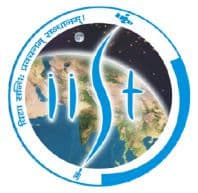Latest Applications Open 2024:
 The JK Polytechnic Entrance Test (PET) is the state-level entrance examination, which is conducted through the Jammu and Kashmir Board of Professional Entrance Examinations (BOPEE) to offer them admission in three-year Diploma in Polytechnic Courses in the field of engineering, besides Computer and Information Technology, Occupational and Secretarial Management.
The JK Polytechnic Entrance Test (PET) is the state-level entrance examination, which is conducted through the Jammu and Kashmir Board of Professional Entrance Examinations (BOPEE) to offer them admission in three-year Diploma in Polytechnic Courses in the field of engineering, besides Computer and Information Technology, Occupational and Secretarial Management.
In the various government and private polytechnic colleges of Jammu and Kashmir, admission will provide to the candidates to complete their aspiring programs.
Through this content, applicants will be able to know detailed information about JK Polytechnic which includes the JK Polytechnic syllabus.
JK Polytechnic Syllabus
The JK Polytechnic syllabus will be available through the authority for the candidates, and the applied candidates should have to prefer the syllabus for better preparation for the examination.
The syllabus details are mentioned below for the candidates.
English
A total of 30 Questions will come from English. Topics can be seen below in the schedule.
| Topic | No. of Question |
| Pronouns-Type and Uses | 4 |
| Conjunction-Type and Uses | 4 |
| Models-modal Auxiliaries and their Uses | 4 |
| Reported Speech-Changes in Verb and Other Changes | 3 |
| Sentence Pattern | 3 |
| Past Perfect Uses | 3 |
| To-Infinitive And-Hing Forms | 3 |
| Other Sentence Pattern | 3 |
| Clauses-Types of Clauses and their Uses | 3 |
| 30 |
Physics
A total of 50 Questions will come from Physics. Candidates can check the syllabus below.
Unit 1: Light-Reflection and Refraction – 12 Questions
- Reflection of Light, spherical mirrors; Image formation; uses of spherical mirrors.
- Sign conventions for spherical mirrors; the relation between focal length and radius of curvature;
mirror formula (only relation) (Numerical problems); magnification. - Refraction of Light, refraction through a glass slab, refractive index, Conditions for no
- Spherical Lenses, Image formation, sign conventions, lens formula (only relation) (Numerical
Problems), Magnification (Numerical Problems), the power of lenses (Numerical Problems).
Unit 2: The Human Eye and the Colorful World – 5 Questions
- The human eye, the power of accommodation, defects of vision, and their correction.
- Glass prism (refraction and dispersion)
- Atmospheric refraction-twinkling of stars and color of the sun at sunrise and sunset.
Unit 3: Electricity – 15 Questions
- The concept of electric charge;
- Electric current; electric potential and potential difference;
- Ohm’s law and experimental verification; resistance and its dependence; the combination of
resistances (in series and parallel) (Numerical Problems) - Heating effect of current-Electric power and energy (Numerical Problems)
Unit 4: Magnetic Effects of Current – 10 Questions
- Crested Experiment; Magnetic field and field lines.
- Magnetic field due to a current carrying-Straight, coil (loop) and solenoid (qualitative only).
- Force on a current-carrying conductor in a magnetic field.
- Electric Motor; Domestic electric circuits
Unit 5: Sources of Energy – 8 Questions
- Various sources of energy; Conventional sources of energy; improvement in technology for
using conventional sources of energy (Biomass and wind energy) - Non-conventional sources of energy (Solar energy, Energy from the sea).
- Nuclear energy (Nuclear fusion and nuclear fission).
- Lasting energy sources
Chemistry
A total of 30 Questions will come from Chemistry.
Unit 1: Chemical Reactions and Equations – 5 Questions
- The chemical equation, writing of chemical equation; Balancing chemical equations.
- Types of chemical reactions; Viz. Combination reactions; Decomposition reactions;
- Displacement reactions; Double displacement reactions; Oxidation and reduction.
- Effects of oxidation and reduction reactions in everyday life, viz. corrosion and rancidity
Unit 2: Periodic Classification of Elements – 4 Questions
- Early attempts regarding classification of elements; like 0’Debernier triads, New lands law of
octaves (Non-Evaluating) - Mendeleev’s periodic table its achievements and limitations.
- Modern periodic table; the position of elements trends in modern periodic table viz. valiancy,
Atomic size, Metallic and non-metallic properties
Unit 3: Carbon and its Compounds – 10 Questions
- Bonding in Carbon, Covalent bond, Allotropes of carbon;
- Versatile nature of carbon; Saturated and unsaturated hydrocarbons; chains; Branches and
rings; homologous series and its characteristics; nomenclature of Carbon Compounds. - Chemical properties of carbon compounds viz. combustion; oxidation; Addition and
substitution reactions. - Important Carbon compounds like Ethane and Ethanoic acid. Properties of Ethanol and
Ethanoic acid. - Soaps and Detergents.
Unit 4: Metals and Non-Metals – 6 Questions
- Physical properties of metals and non-metals.
- Chemical properties of metals like the action of water, air, acids, salts; Reactivity series of metals.
- Cause of reactivity of metals and non-metals. Properties of ionic compounds.
- The occurrence of metals; their extraction, enrichment of ores, Extraction of metals in
accordance with activity series; refining of metals. - Corrosion of metals and its fermentation.
Unit 5: Acid Basis and Salt – 5 Questions
- An idea about acids and bases; chemical properties of acids and bases viz. The action of metals,
metal carbonates, metal hydrogen carbonates (only in case of acids), metallic acids; nonmetallic
acids and bases. - Similarities in acids and bases; the reaction of acids and bases with water.
- The strength of acids and base solutions; pH and its importance.
- The idea of salts, their family, and pH. Chemicals from common salts like Sodium Hydroxide,
Baking soda and Washing soda; Hydrated salts & Plaster of Paris.
Mathematics
A total of 70 Questions will come from Mathematics. Candidates can check the syllabus below.
Unit 1: Real Numbers – 3 Questions
Euclid’s division lemma, Fundamental Theorem of Arithmetic, Statements after reviewing work
done earlier and after illustrating through examples, Proofs of results irrationality of √2, √3, √5
decimal expansion rational numbers regarding terminating/ non-terminating recurring decimals.
Athematic Progression
The motivation for studying Arithmetic progression, Derivation of standard results
Unit 2: Pair of Linear Equations in Two Variables – 6 Questions
Pair of Linear Equations in two variables. Algebraic conditions for some solutions. Solutions of
a pair of linear equations in two variables algebraically by substitution, by elimination and by cross
multiplication. Simple situational problems may be included. Simple problems on equations
reducible to the linear equation may be included.
Unit 3: Polynomials – 4 Questions
Zeroes of a Polynomial, Relationship between zeroes and coefficients of a polynomial with
particular reference to quadratic polynomials.
Quadratic Equation – 09 Questions
The standard form of Quadratic equation ax2 +bx+c=0,(a=0), solution of a quadratic equation (only real
roots) by factorization any by completing the square, I .e.by using quadratic formulas, relationship
Between discriminant and nature of roots. Problems related to day-to-day activities to be
incorporated.
Unit 4: Triangles – Questions
Definitions, examples counterexamples of similar triangles:
(Prove): If a line is drawn parallel tone side of a triangle to intersect the other two sides in
distance points, the other two sides are divided in the same ratio.
(Motivate): if a line divides two sides of a triangle in the same ratio, the line is parallel to
the third side.
(Motivate): If in two triangles, the corresponding angles are equal, their corresponding
sides are proportional, and the triangle is similar.
(Motivate): If the corresponding sides of two triangles are proportional, their corresponding
angles are equal, and the two triangles are similar.
(Motivate): If one angle of a triangle is equal to one angle of another triangle and the sides
including these angles are proportional, the two triangles are similar.
(Motivate): If a perpendicular is drawn from the vertex of the right angle to the
hypotenuse, the triangle on each side of the perpendicular is similar to the whole triangle
and each other.
(Prove): The ratio of the areas of two similar triangles is equal to the ratios of the squares
on their corresponding sides.
(Prove): In a right triangle, the square on the hypotenuse is equal to the sum of the square
on the other two sides.
(Prove): In a triangle, if the squares on one side are equal to the sum of the squares on the two
sides, the angles opposite to the first side is a right triangle.
Also, Check Below-
Unit 5: Coordinate Geometry – 7 Questions
Lines (in two dimensions)
Review the concepts of coordinate geometry done earlier including graphs of linear equations.
Awareness of geometrical representation of quadratic equations polynomials, Distance between
two points and section formula (internal).Area of a triangle.
Unit 6: Introduction to Trigonometry – 10 Questions
Trigonometric ratios of an acute angle of a right-angled triangle. Proof of their existence (well defined), motivate the ratios, whichever are defined at 0’ and 90’. Values with proofs of the trigonometric ratios of 30’,45’ and 60’. The relationship between the ratios. Trigonometric identities, Proofs, and applications of the identity 2 + Cos2 = 1, only simple identities to give. Trigonometric ratios of complementary angles.
Unit 7: Heights and Distances – 3 Questions
Simple and believable problems on heights and distances. Problems should not involve more than
two right triangles. The angle of elevation/ depression should be only 30, 45, 60.
Unit 8: Surface Areas and Volumes – 10 Questions
- Problems on finding surface areas and volumes of combinations of any two of the following
cubes, cuboids, spheres, hemispheres and right circular cylinders/ cones, frustum of a cone. - Problems involving converting one type of metallic solid into another and other mixed
Problems with a combination of not more than two different solids are taken.
Unit 9: Probability – 4 Questions
History, Repeated experiments, and observed frequency approach to probability focus is on
empirical probability. The classical definition of probability, Simple problems on a single event, not using set notation.
JK Polytechnic Exam Pattern
The Exam Pattern for Polytechnic PET has mentioned below for the candidates.
- Mode of the Exam: Written Test
- Duration of the test: 03 hours
- Type of Questions: MCQ type
- Number of Questions: 180
- Negative Marking: There is a negative marking of 0.25 marks for every incorrect answer.
- Standard of the Test: The paper will have questions as per the Class 10th standard.
The distribution of questions is given in the table below:
| Name of the Subject | Number of Questions | Marks |
| Mathematics | 70 | 70 |
| Physics | 50 | 50 |
| Chemistry | 30 | 30 |
| English | 30 | 30 |
| Total | 180 | 180 |
If you any queries regarding JK Polytechnic Syllabus 2023, you can ask your query leave comments below.

I’m Manisha Das, passionate about educational news and sharing insights on teaching exams. My passion for education news is fueled by my love for creating new things and exploring new ideas. With my dedication and passion for teaching exams, I am committed to providing accurate and informative updates for the Entrance Exam. Join me in discovering the latest developments and exploring the dynamic world of education!

